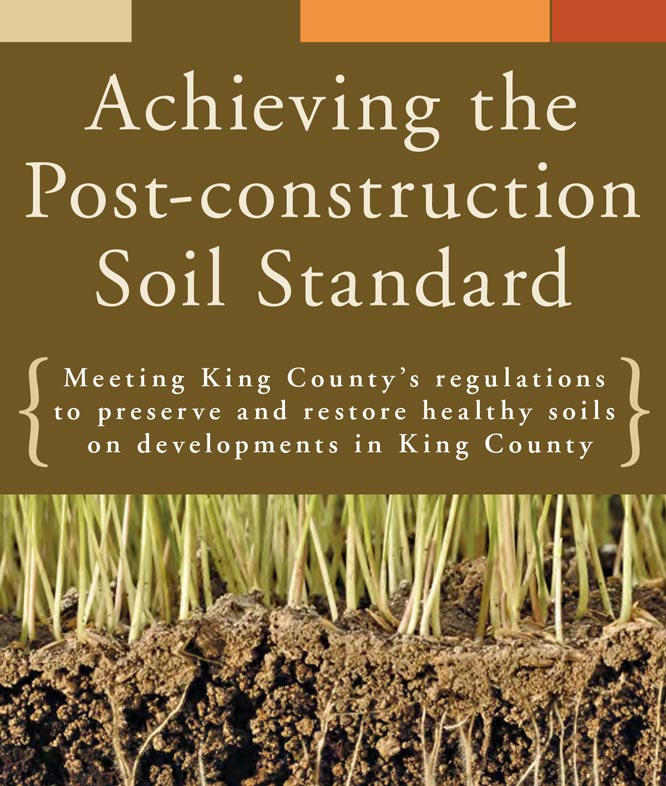Achieving the Post-construction Soil Standard
Compost and topsoil calculator for meeting post-construction soil standards (King County Code 16.82)
Learn how to meet King County's Post-construction soil standard requirements Download PDF 1 MB. Our Compost and Topsoil Calculator can help you determine the compost or topsoil needs for site development projects. This includes completing the permitting application for meeting the post-construction soil standard. Use it to calculate:
Step 1: Visit the King County Post-Construction Soil Standard page to understand code requirements and soil management options. Step 2: Determine which soil management option(s) are needed for each area marked on your project site map. Step 3: Choose Turf or Planting beds and determine Amendment rate of compost needed. For soil treatment options that involve adding compost to the soil, you need to choose either the pre-approved amendment rate of application or a custom amendment rate. A custom amendment rate will be lower than the pre-approved rate for most sites. To calculate a custom amendment rate, you will need to enter information from laboratory tests* of the site soil and specified compost products. |


 Translate
Translate
